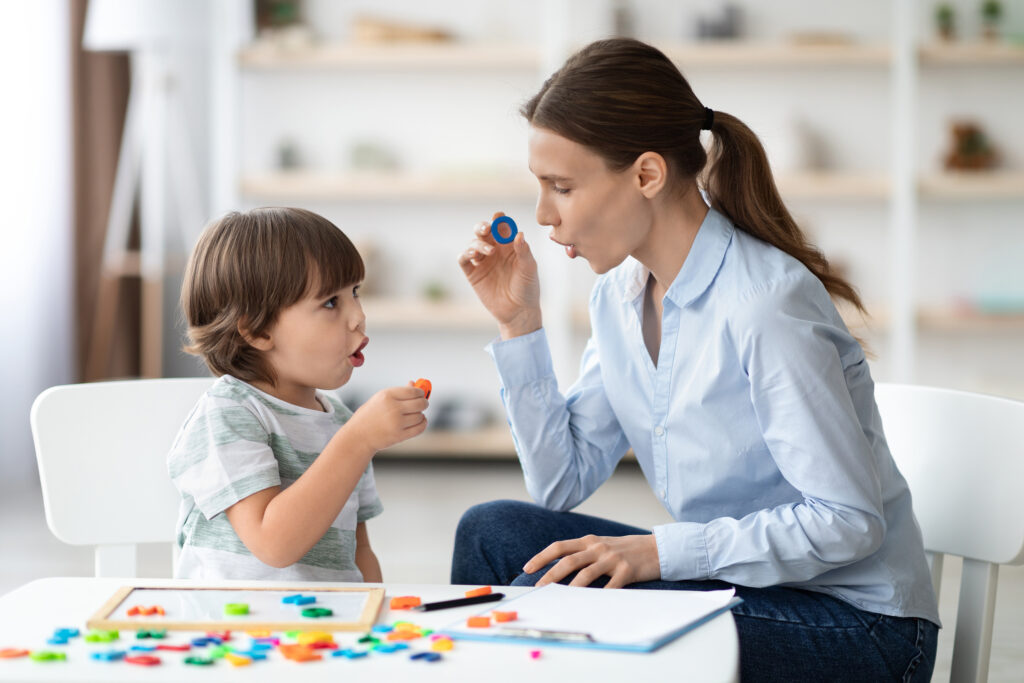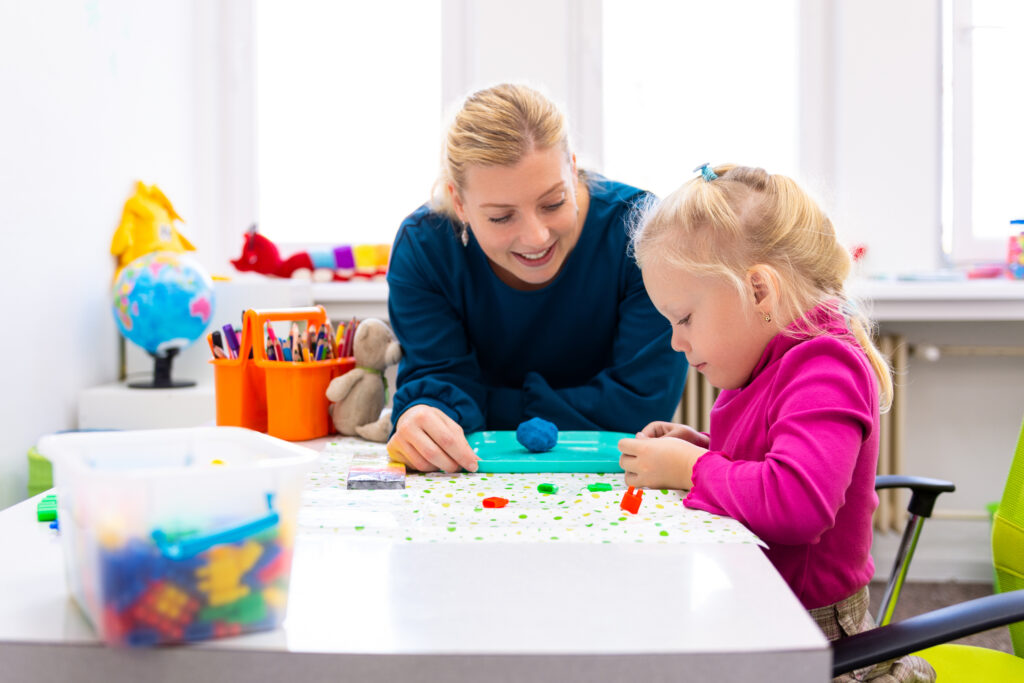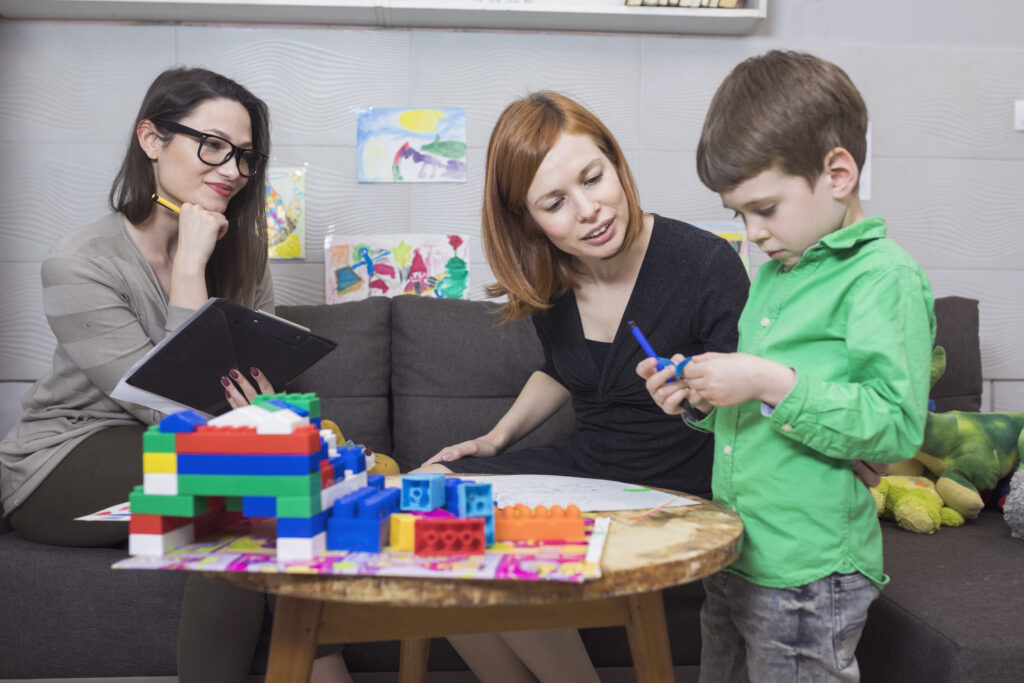Is your Child a Late Talker or Could it be Autism?
This is one of the most frequently searched and emotionally loaded questions parents ask when communication milestones are not being met. Many parents notice their toddler is not speaking as expected and wonder whether it’s a simple speech delay or something more complex like autism.
Both speech delay and autism can involve late speech, but they are not the same. This article will help you understand the difference between speech delay and autism, identify early signs, and know when to seek professional evaluation.
What Is a Speech Delay?
Speech delay refers to a lag in the ability to produce spoken words compared to developmental norms. This may include trouble forming sounds, combining words, or using speech consistently to communicate.
Children with speech delay generally:
- Follow directions and show understanding of what others say
- Engage with caregivers and peers
- Use eye contact, gestures, or pointing to communicate needs
- Attempt to imitate sounds, even if words aren’t fully formed
In most cases, a child with speech delay without autism shows interest in the world around them but struggles to produce speech at the expected pace. According to the American Speech-Language-Hearing Association (ASHA), the issue may be isolated to speech, or part of a language delay, which also affects understanding and expression [ASHA, 2023].
Causes of speech delay include:
- Hearing impairments (especially chronic ear infections)
- Neurological or oral-motor issues
- Limited exposure to spoken language
- Prematurity or medical complications at birth
What Is Autism and How Does It Affect Language?
Autism Spectrum Disorder (ASD) is a neurodevelopmental condition that affects communication, social interaction, and behavior. Children with autism may speak later than peers, use language differently, or not speak at all. However, autism affects more than just verbal development.
According to the DSM-5, the diagnostic criteria for autism include:
- Persistent challenges in social communication and interaction
- Repetitive behaviors or restricted interests
- Symptoms present in early developmental stages that affect daily functioning
When a child has autism and delayed speech, you may also observe:
- Limited eye contact or difficulty engaging in back-and-forth interaction
- Lack of gestures such as pointing, waving, or showing objects
- Repetitive behaviors such as hand flapping or lining up toys
- Fixation on routines or distress with changes
- Delayed or unusual play patterns, such as spinning wheels instead of engaging in pretend play
Some children with autism may be verbal but still struggle with pragmatic language, which involves the social rules of conversation. They may speak fluently but lack the ability to engage in reciprocal dialogue, understand sarcasm, or respond to facial cues.
Speech Delay vs Autism: How to Tell the Difference
While both conditions can involve limited speech, several key differences help distinguish autism from a typical speech delay:
Children with speech delay often:
- Try to communicate nonverbally
- Show interest in people and social games
- Engage in pretend play (e.g., feeding a doll or driving a toy car)
- Imitate facial expressions and sounds
- Follow directions and routines with ease
Children with autism may:
- Show minimal interest in interaction
- Have difficulty with imitation or pretend play
- Avoid eye contact or appear unaware of social cues
- Not respond to their name
- Display repetitive or sensory-seeking behaviors
One of the most useful indicators is nonverbal communication. If a child is not talking but still points, shows you things, or gestures for help, this points more toward a speech or language delay. If a child does not attempt to communicate, socially or verbally, autism may be the underlying cause.
Late Talker or Autism? Clarifying the Gray Area
Many parents wonder:
“Is my child a late talker or autistic?”
“Does speech delay mean autism?”
These questions are valid because both groups may speak late. However, late talkers, meaning children with delayed expressive language only, typically catch up by age three, especially with early support.
By contrast, children with autism speech delay often show signs of difficulty in more than one area of development. In these cases, speech delay is one piece of a larger neurodevelopmental picture.
Late talkers:
- Reach other developmental milestones on time
- Use gestures and eye contact appropriately
- Play socially and seek out interaction
- May suddenly catch up with speech after a quiet phase
Children with autism:
- Often show delays in play, interaction, and social referencing
- May lack typical gestures such as pointing or waving
- May use language repetitively, such as scripting, or not functionally
- Struggle with joint attention and pretend play
If you are trying to decide between late talker versus autistic presentation, observe how your child engages with others, not just how many words they use.
Red Flags by Age: When to Seek Support
Recognizing early signs of communication delays can have a meaningful impact on your child’s long-term development. While children develop at different rates, there are key milestones that help guide when to observe, when to support, and when to take action.
Below are age-based communication markers, followed by real-world examples to help parents understand what these red flags might look like at home.
By 12 Months: No Babbling, Pointing, or Waving
At this stage, babies should be showing early signs of communication, even if they are not using words yet. They typically:
- Babble in strings like “ba-ba-ba” or “da-da-da”
- Wave hello or goodbye
- Point to things they want, such as a snack or toy
- Respond with vocalizations or gestures when spoken to
Example of a concern: Your baby does not babble when excited, does not point to objects of interest, and does not wave or gesture when you say goodbye, even when prompted. They may be very quiet or seem content playing alone without attempting to engage you.
By 16 Months: No Spoken Words
Most toddlers will say at least a few words by this age, such as “mama,” “dada,” “ball,” or “more.” They may also label familiar objects or respond to simple requests.
Example of a concern: Your child does not use any real words and does not attempt to imitate your speech. They may grunt or cry to indicate wants but do not try to say words like “up” or “milk.” If asked to say “hi” or name a toy, they show little interest or do not attempt a response.
By 24 Months: No Meaningful Two-Word Combinations
By age two, toddlers should begin putting together simple two-word phrases such as:
- “Want juice”
- “Go outside”
- “More blocks”
These combinations show that the child understands how to use words to communicate ideas.
Example of a concern: Your child may say isolated words like “car” or “no,” but they do not string words together meaningfully. They may echo words you say but rarely initiate speech on their own or combine words spontaneously. If they speak, it may sound memorized or unrelated to the situation, such as repeating a phrase from a TV show.
By 30 to 36 Months: Limited Response to Name, Repetitive Behaviors, or Lack of Pretend Play
By the age of three, most children can:
- Follow simple instructions
- Engage in pretend or imaginative play (like feeding a doll)
- Use a growing vocabulary to describe, request, and comment
- Show interest in playing with others or involving others in play
Examples of concerns:
- Your child often does not respond to their name being called, even when spoken loudly or multiple times.
- They engage in repetitive behaviors like spinning objects, lining up toys, or hand-flapping, often for long periods.
- Pretend play is absent or rigid—for example, they may fixate on pushing buttons or spinning wheels instead of pretending the toy is a car or animal.
- They may prefer to play alone and do not seek out interaction with peers or family members.
When to Act
If you notice any of the above red flags, or if something simply “feels off,” it is wise to seek a professional opinion. Pediatricians, speech-language pathologists, and developmental specialists can assess whether your child is on track or may benefit from early support.
Keep in mind:
- It is better to evaluate early than to wait and wonder.
- Children under the age of three are in a critical window for language development.
- Early intervention can improve both speech and social communication outcomes, whether your child has autism, a speech delay, or another developmental concern.
Does Speech Delay Always Mean Autism?
No, not necessarily. A child with delayed speech is not automatically on the autism spectrum. Many children experience developmental speech delays and go on to catch up with the help of speech therapy.
However, delayed speech can be a sign of autism when it is accompanied by other red flags, especially in the areas of social interaction and play. For example, a child who is not talking and also avoids eye contact, does not point to things, or does not show interest in others may require an autism evaluation.
Receptive Language Delay vs Autism
Not all children who struggle with speech have trouble talking. Some have difficulty understanding language. This is known as receptive language delay.
Signs of receptive language delay may include:
- Not following simple directions
- Appearing confused when asked questions
- Not responding to name consistently
- Lack of interest in verbal interactions
This condition may occur on its own or alongside other delays. Children with receptive language delay not autism typically still enjoy social interaction, make eye contact, and play in age-appropriate ways. A speech-language pathologist can evaluate whether comprehension is within the expected range.
Autism with Speech Delay: When Both Occur Together
It is common for children with autism to have co-occurring speech or language delays. According to the Centers for Disease Control and Prevention (CDC), up to 30 percent of children with autism are minimally verbal by age four [CDC, 2023].
In cases where both autism and speech delay are present, the child may benefit from a multidisciplinary intervention plan that includes:
- Speech-language therapy focused on articulation and social language use
- Applied Behavior Analysis (ABA), with emphasis on communication goals
- Natural Environment Teaching (NET), where speech skills are practiced during everyday activities
- Visual supports such as picture schedules or communication devices
Early and coordinated support gives children with autism and speech delay the best chance of developing functional language skills.
How to Get a Diagnosis
If you’re wondering whether your child has autism or a speech delay, the best next step is a full developmental evaluation. This may include:
- Speech and language assessments
- Developmental screening tools such as ADOS-2
- Observation of play, communication, and social behaviors
- Input from parents and teachers
- Hearing evaluation to rule out auditory issues
These evaluations are often conducted by a speech-language pathologist, developmental pediatrician, or child psychologist. Early diagnosis ensures that children receive access to the interventions they need during the most important window for language development.
Reach Out to The Helm
Understanding the difference between speech delay and autism is not about applying a label. It is about making sure your child receives the right support, at the right time.
A child who is simply a late talker may benefit from short-term speech therapy and added language enrichment at home. A child showing signs of autism alongside delayed speech may require a more comprehensive plan that includes ABA therapy, speech-language services, and ongoing parent support.
No matter the cause, early action leads to better outcomes. If you have questions about your child’s development, The Helm ABA Therapy can help you take the next step. Our team is experienced in working with both speech delays and autism-related communication challenges. We can assist with:
- Screening for red flags
- Coordinating referrals to speech-language pathologists and developmental pediatricians
- Developing personalized ABA therapy programs focused on communication
- Coaching families on how to support speech and social skills at home
You don’t have to navigate this alone. If your child is not speaking as expected or seems to be falling behind in communication milestones, trust your instincts. Reach out to The Helm ABA Therapy to speak with a member of our team. We can help you determine whether a full evaluation is needed, and guide you toward the right services for your child’s growth.
References
- American Speech-Language-Hearing Association. (2023). Speech and Language Disorders in Children. https://www.asha.org
- Centers for Disease Control and Prevention. (2023). Autism Spectrum Disorder. https://www.cdc.gov/ncbddd/autism
- American Academy of Pediatrics. (2020). Developmental Surveillance and Screening. https://pediatrics.aappublications.org
- Autism Speaks. (2023). Speech and Communication Development. https://www.autismspeaks.org
- Mayo Clinic. (2024). Speech Delay in Children: Causes and Diagnosis. https://www.mayoclinic.org



